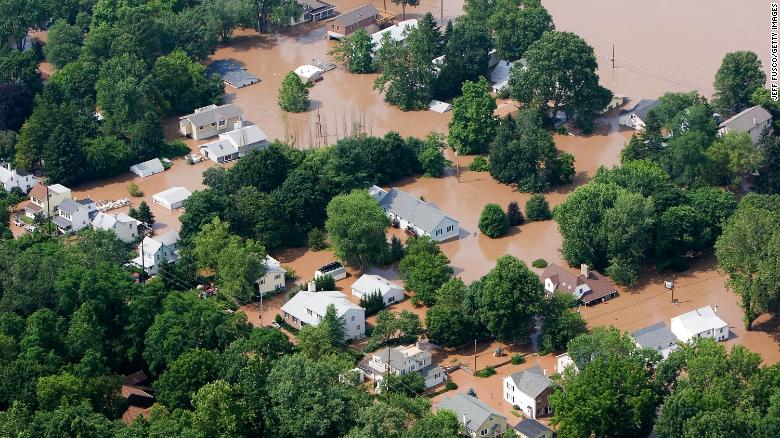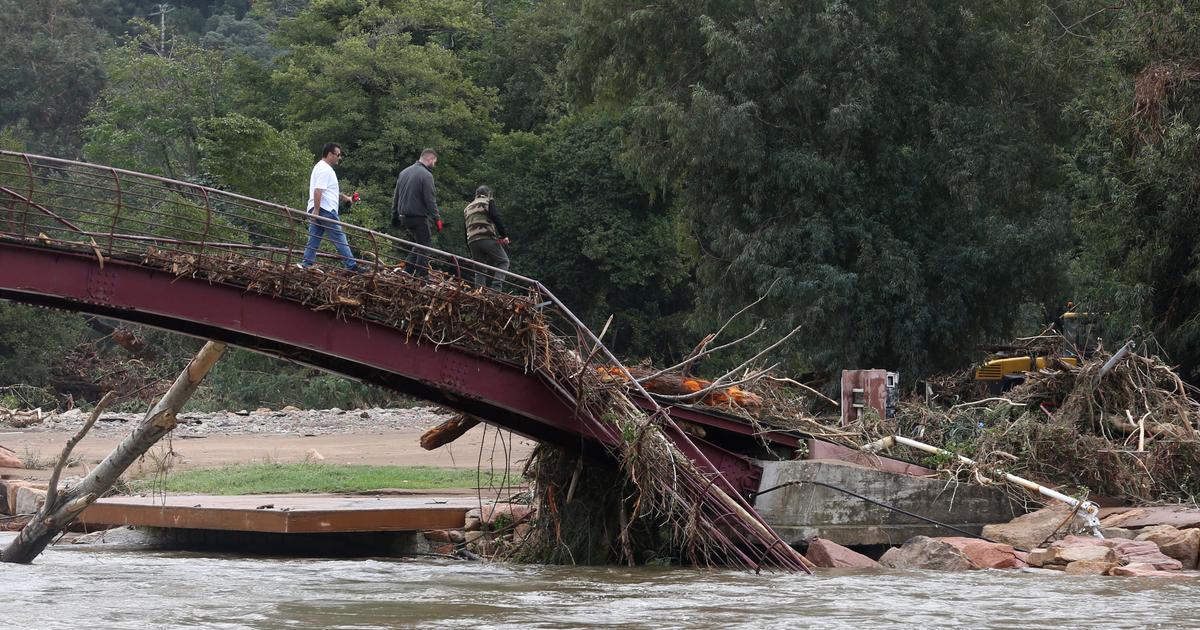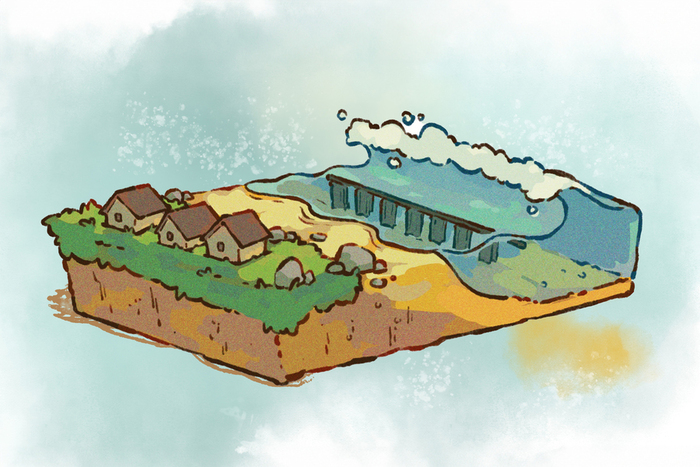"I tied my children with cable, if we did not survive, they would find us together" 2:58
(CNN) --
While it's hard to imagine a more terrifying flood than what St. Louis and Kentucky experienced last week, new research shows more extreme events are on the way, and if affected communities don't rebuild smarter way, the devastation will be worse the second time.
The world is getting better at managing the risk of extreme weather events and adapting to the changes brought about by the climate crisis.
But a study published Wednesday in the journal Nature reveals that floods and droughts caused by climate change remain more deadly and costly.
Even if a heavily affected community tries to adapt and prevent a repeat disaster, it is likely to underestimate the intensity of the next.
"So [adaptation efforts] are only effective up to a point," says study co-author Laila Balkhi, project manager at the University of Saskatchewan's Global Institute for Water Security.
These places respond to the events of the past, she told CNN, "but not necessarily the worst of the future."
Kentucky floods: Dozens found dead, death toll expected to rise
Amir AghaKouchak, a co-author and a civil engineer at the University of California, Irvine, told CNN that many parts of the country, including the St. Louis area and eastern Kentucky, are particularly vulnerable and need to make many improvements to adapt to rapid climate change. .
"In the United States, in many of our cases, we see more extreme events occurring, which is an important factor that we need to consider," AghaKouchak said.
"Our exposure has increased almost everywhere, because there is more development, more industries, buildings, people from all walks of life, so our exposure has increased."
advertising
"We are in a better situation than many other countries in terms of investment, but even so, the recent floods show that we are still very vulnerable to large extreme events," he added.
Members of the Tennessee Task Force One search and rescue team wade through debris-strewn Troublesome Creek after a search dog picked up the scent of a possible flood victim Sunday.
To illustrate this point, the researchers pointed to two devastating floods along the Delaware River in 2004 and 2006. Both events were due to heavy rains that caused the river to overflow its banks and flood surrounding areas.
In the case of 2004, the remnants of Hurricane Ivan unleashed massive amounts of rain that caused widespread property damage in Pennsylvania, New Jersey, and Delaware.
But another serious flood hit the same river basin in 2006, when torrential rains fell for six days in a row, taking an even bigger toll than the 2004 floods.
The two floods combined caused more than US$700 million in damage.
Flooded areas along the Delaware River in June 2006 south of Trenton, New Jersey.
Days of heavy rain forced thousands of people to evacuate low-lying areas along the river.
But the researchers also showed that smart reconstruction can prevent a worse disaster the second time around.
Repeated floods on the Danube River in Germany and Austria, once in 2002 and once in 2013, show how communities can lower their risk, even in the face of a more intense extreme weather event.
In 2013, waters rushed through historic cities and water levels broke a 500-year record.
However, the destruction and death toll were limited thanks to changes promoted by the government after the 2002 flood, including the improvement of the early warning system and investment in infrastructure to mitigate floods in both countries. .
Devastating flooding in St. Louis, Missouri, destroyed dozens of homes
AghaKouchak said the United States must learn from that example and quickly apply similar measures, especially as the country's infrastructure is aging.
"Our infrastructure systems are very old, and even though the United States was a pioneer in developing flood infrastructure, that means a lot of the things we build are very, very old," he said.
"We have levees that are 70 years old, some 100 years old. We really have to focus on reducing our vulnerability associated with this old infrastructure."
Beth Tellman, a climate researcher at the University of Arizona who reviewed the study, noted that there are also underlying social and economic barriers embedded in the fabric of urban areas that compound vulnerability.
"This is the sad story of the implications of a world with climate change, which is having a lot of unprecedented dangers all the time," Tellman told CNN.
"We're not learning enough from the extremes of the past, and we're going to have to do a lot more than improve existing risk management systems and fundamentally rethink who's exposed and who's living in danger and can we really reduce that aspect of risk."
For example, the practice known as "Redlining," the long-standing US government-sanctioned effort to segregate communities of color by denying them home loans and insurance, has led to inadequate and unfair designs of disaster mitigation infrastructure. floods in these former discriminated communities.
As a result, they tend to be more vulnerable and exposed to extreme weather events.
Why do we have more and more extreme weather events?
Because of this legacy, any future risk management strategy must focus on social equity, Tellman said.
"It's the most vulnerable communities that end up buying [houses] in those places, because land can be really cheap in the floodplains because of the risk," he said.
"So how are we going to think about managed withdrawal and relocation out of places that we know are at risk and real options for people to live somewhere else?"
Balkhi said it all boils down to making sweeping, equitable and proactive changes, rather than reacting without a holistic approach after a disaster strikes.
"The responsibility to actually respond to a climate emergency lies with the government and also with individual governments," Balkhi said.
"It's not a flood emergency. It's not a drought emergency. It's a climate emergency."
Climate changeFloods














